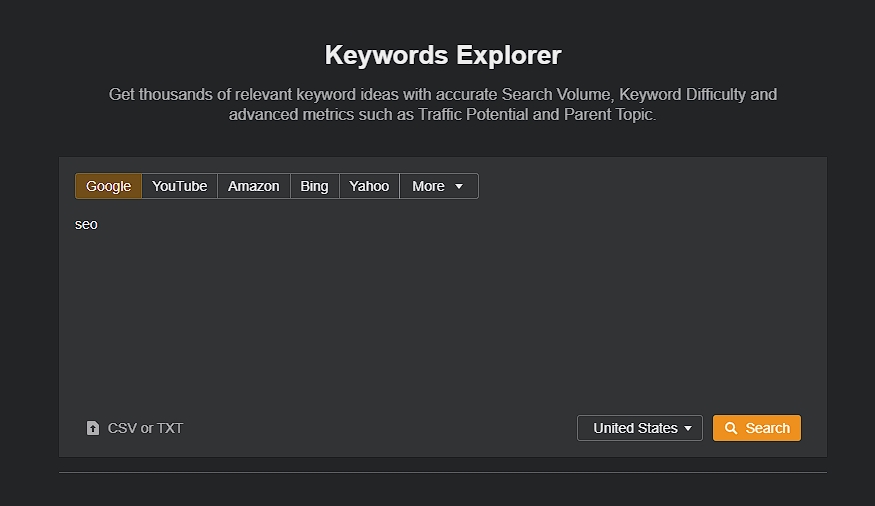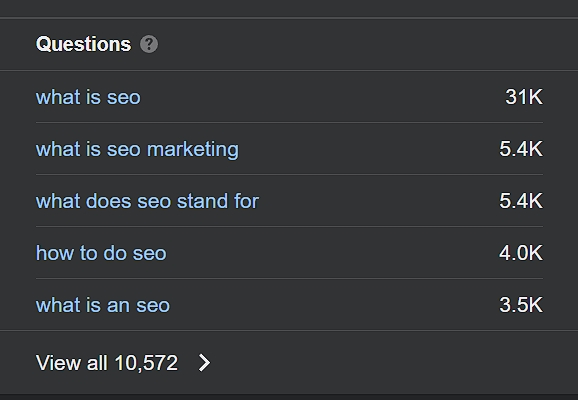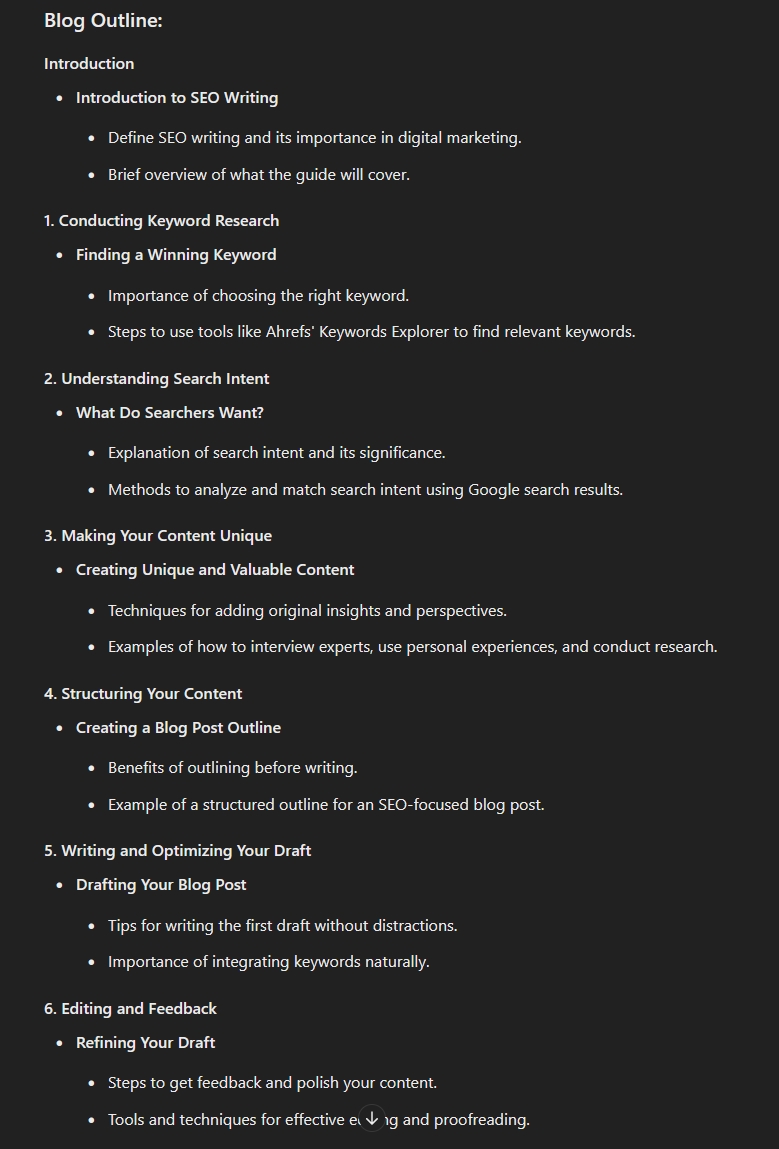You might think SEO writing is too complex or time-consuming, but it’s actually a strategic way to make your content more visible and effective.
By focusing on keyword research and understanding what your audience wants, you can create content that not only attracts but also engages.
Crafting compelling meta titles and internal links will further enhance your content’s reach. Imagine your articles consistently appearing at the top of search results, driving organic traffic and boosting your site’s credibility.
Ready to discover how to make your content stand out and resonate with both readers and search engines?
Understanding SEO writing
SEO writing means knowing how to create content that both search engines and your audience will love. It’s all about combining a solid SEO strategy with effective content optimization and precise audience targeting. You’ll need to craft your material to meet the demands of search algorithms while ensuring it’s engaging for your readers.
First, focus on understanding your audience’s needs and search intent. This involves researching what keywords they use and what questions they might have. Tools like Ahref Keywords Explorer can help identify relevant terms. Once you have your keywords, weave them naturally into your content. This is where advanced writing techniques come in handy. Use varied sentence structures, and break down complex ideas with bullet points or numbered lists to make the content more accessible.
Next, align your content with search algorithms. This means using headings and subheadings to organize your text, creating compelling titles and meta descriptions, and incorporating internal links to other relevant pages on your site. These tactics not only help with content optimization but also improve user experience.
Importance of SEO writing
SEO writing’s significance can’t be overstated when it comes to boosting your website’s visibility and driving organic traffic. By mastering SEO writing, you reveal numerous SEO benefits that are essential for your site’s success.
Content optimization guarantees your material isn’t just informative, but also crafted to rank well in search engine results. This, in turn, drives traffic generation, bringing a steady stream of visitors to your site.
One of the primary goals of SEO writing is to enhance online visibility. When your content ranks higher in search engine results, more people can find and engage with your website. This boosts your presence in a crowded digital space.
Additionally, SEO writing plays a significant role in improving user experience. Well-optimized content is easier to read and navigate, keeping visitors on your site longer and reducing bounce rates.
Effective SEO writing involves strategically using keywords, structuring content with headings and subheadings, and ensuring readability. By focusing on these elements, you can create content that meets both user needs and search engine algorithms.
In a community-driven digital environment, mastering SEO writing helps you connect with your audience and stand out.
Keyword research and analysis
Keyword research is the cornerstone of effective SEO, helping you identify the terms your audience uses to find information online. Start with seed keywords, which form the basis of your research. These are simple terms related to your niche.

Next, use keyword tools like Ahrefs Keywords Explorer to expand these into more specific queries. Understanding search intent—why users search for a term—guides your keyword planning and guarantees you meet audience needs.

Competitor analysis is essential. By examining the keywords your competitors rank for, you can identify gaps and opportunities. Tools like Ahrefs Site Explorer provide valuable data metrics to evaluate these keywords’ performance.

Be mindful of caveats and misconceptions. Not all high-volume keywords are beneficial; some may not align with your business potential or target audience. Prioritize keywords that not only draw traffic but also convert. Analyze search volume, keyword difficulty, and CPC (cost-per-click) to assess keyword targeting viability.
Incorporating these strategies into your SEO efforts ensures your content reaches the right audience, ultimately driving more traffic and engagement. Always adapt based on ongoing analysis, focusing on keywords that align with your business goals.
Understand what searchers want to see in your content
Craft content that aligns perfectly with the search intent by delving into the specific needs and expectations of your target audience. Start by understanding user preferences; this means knowing what your audience is looking for and tailoring your content to meet those needs. Analyzing search trends can provide valuable insights into what topics are currently popular, allowing you to create content that resonates with your audience.
Meeting audience expectations is essential for content relevance. If users are searching for detailed guides, make sure your content is thorough and informative. If they’re looking for quick answers, provide concise and clear information. Understanding search intent helps you align your content with what users are specifically looking for, whether it’s informational, navigational, or transactional content.
Incorporate relevant keywords naturally, making sure they fit seamlessly into your content without disrupting the flow. This not only improves search visibility but also ensures that your content remains engaging and valuable to readers. Regularly updating and revising your content based on ongoing keyword research and audience feedback keeps it relevant and effective.
Figure out how to make your content unique
Frequently, the key to making your content unique lies in your ability to provide original insights and present information in a way that stands out from the competition. To achieve content uniqueness, start by incorporating a creative approach that showcases your originality.
Here are some strategies to help you stand out:
- Share Original Ideas: Use your expertise and personal experiences to bring a different perspective to common topics. This could mean sharing case studies, conducting original research, or offering unique solutions to problems.
- Be Creative in Presentation: Engage your audience with a mix of formats—videos, infographics, podcasts, or interactive content. This creative approach can make your content more engaging and visually appealing.
- Add Personal Touches: Inject your personality or brand voice into the content. This helps create a connection with your audience, making your content more relatable and memorable.
- Leverage Unique Data: Use proprietary data, statistics, or quotes from experts to support your points. This not only adds credibility but also provides new information that readers can’t find elsewhere.
Create a blog post outline
When you’re ready to create a blog post outline, start by brainstorming potential topics using Ahrefs Keywords Explorer to guarantee relevance and search demand. Begin with a solid audience analysis, ensuring your chosen topic resonates with your readers. This step helps you understand what your audience is searching for, ensuring high topic relevance.
Next, organize your thoughts using a clear content structure. Break down your blog post into sections with headings and subheadings. This not only improves readability but also aligns with a robust SEO strategy. Each section should address a specific point and flow logically from one to the next. For instance, start with an engaging introduction, follow up with the main body divided into key points, and conclude with a strong summary or call-to-action.
Incorporate visual elements like images, charts, and infographics to make your content more engaging and digestible. Visuals can help illustrate complex points and keep readers interested.
Lastly, don’t forget to include examples, expert quotes, and relevant data in your outline. This enriches your content and provides value, ensuring it stands out in search results.
You can use AI tools like ChatGPT, Zimmwriter, and Frase to come up with an outline as well.

Writing high-quality content
After outlining your blog post, focus on producing high-quality content that captivates your audience and meets SEO requirements. Begin by paying close attention to content structure. Organize your information with clear headings and subheadings to make it easy for readers to follow along. This not only improves readability but also helps search engines understand your content better.
Next, consider your writing style. Use a conversational tone that resonates with your audience, making them feel included and engaged. Your writing should be concise, yet informative, avoiding unnecessary jargon.
Audience targeting is essential. Understand who your readers are and what they’re looking for. Tailor your content to address their needs and interests directly. This alignment guarantees that your content isn’t only relevant but also valuable to your audience.
Content length matters, too. While there’s no one-size-fits-all rule, aim for in-depth coverage of your topic. Longer posts often perform better in search rankings, but they must maintain quality throughout.
Feedback and editing process
To enhance your content’s quality, seek feedback from colleagues and incorporate their suggestions. This collaborative process is important for creating search-optimized content. Start by sharing your drafts with team members for peer review. Their insights can help identify areas needing clarity or improvement. Incorporating feedback not only refines your content but also fosters a sense of teamwork and belonging among your peers.
Streamlining the editing process is essential. Use tools like Google Docs to facilitate real-time collaboration. This allows multiple contributors to provide input simultaneously, making the editing process more efficient. Focus on iterative improvements, revisiting the content multiple times to ensure it meets SEO best practices.
During the editing phase, pay attention to grammar, readability, and keyword optimization. Tools like Grammarly and Hemingway can help simplify your writing and correct any errors. Make sure your content aligns with the target keywords and search intent.
Lastly, don’t underestimate the power of a thorough peer review. A fresh set of eyes can catch mistakes you might overlook and provide new perspectives that enhance the overall quality of your content. This iterative process of editing and feedback is crucial for producing polished, search-optimized content.
Crafting engaging meta titles and description
Crafting engaging meta titles and descriptions is vital for capturing user attention and improving your website’s search engine performance. Meta tag optimization is crucial to guaranteeing that your content stands out in search results. Start by incorporating target keywords naturally into both your meta titles and descriptions. This not only boosts your search engine visibility but also helps users understand the relevance of your content at a glance.
Utilize compelling language to make your meta titles catchy and appealing. Power words like ‘ultimate,’ ‘essential,’ and ‘guide’ can greatly enhance your click-through rates. For example, instead of a plain title like ‘SEO Tips,’ opt for ‘Ultimate Guide to SEO: Essential Tips for Success.’
Your meta descriptions should accurately summarize the content while enticing users to click. Aim for a balance between informative and engaging. For instance, ‘Discover the top SEO strategies to boost your website’s ranking and drive more traffic’ is more compelling than a generic description.
In SEO copywriting, every word counts. Ensure your meta titles are around 50-60 characters and descriptions are about 150-160 characters. This not only aligns with best practices but also ensures your meta tags display correctly on search engine results pages.
Adding Internal Links
In addition to crafting engaging meta titles and descriptions, adding internal links can greatly enhance your website’s SEO and user experience. Effective internal linking strategies guide both search engines and visitors to key pages on your site.
By employing link optimization techniques, you can make sure that your internal links are logically structured and highly relevant.
Start by strategically placing anchor text within your content. The anchor text should be descriptive and include relevant keywords, making it clear what the linked page is about.
Regularly performing an internal link audit is essential. This involves checking for broken links, making certain all links are functional, and identifying opportunities to add new links. Tools like Ahrefs can help streamline this process.
To improve user experience, use a pyramid structure for your internal links. This method organizes your site’s content hierarchically, making it easier for users to navigate and find information.
Also, consider including breadcrumb links which can enhance both navigation and SEO.
Use Multimedia In Your Content
Incorporating multimedia elements like images, videos, and infographics into your content not only enhances engagement but also improves the overall user experience. Multimedia benefits are vast, providing visual engagement that keeps readers on your page longer.
Images can make your content more appealing and easier to understand. Make sure image relevance by selecting visuals that directly support your text. According to HubSpot, content with relevant images gets 94% more views than content without visuals, making it evident that images are essential.
Videos are another powerful tool. Video optimization can greatly boost your organic traffic. For instance, adding videos to your posts can enhance your search engine rankings and attract more visitors. Videos can increase organic traffic from search engines by up to 157%.
Infographics are also incredibly effective. Infographic effectiveness lies in their ability to condense complex data into an easy-to-digest visual format. They’re liked and shared on social media three times more than any other type of content.
Conclusion
To wrap up, remember that mastering SEO writing techniques is key to enhancing your content’s visibility and driving organic traffic. Staying updated with the latest SEO trends guarantees your content remains relevant and competitive.
Focus on content optimization by integrating keywords naturally, crafting engaging headlines, and providing valuable information that resonates with your audience.
Audience engagement is essential, so always aim to create content that not only ranks well but also connects with your readers. Use internal linking to guide users through your site and boost SEO.
Regularly updating your content to reflect new information or trends keeps it fresh and appealing.
Organic traffic is a significant indicator of your content’s success. By optimizing for search engines and creating high-quality content, you can attract more visitors without relying on paid advertisements. Analytics tools can help you track performance and make necessary adjustments.
Continuous learning is crucial in the ever-evolving world of SEO. Stay informed through industry blogs, webinars, and networking with other professionals. By consistently refining your skills and strategies, you’ll ensure your content stays at the forefront of search results.


